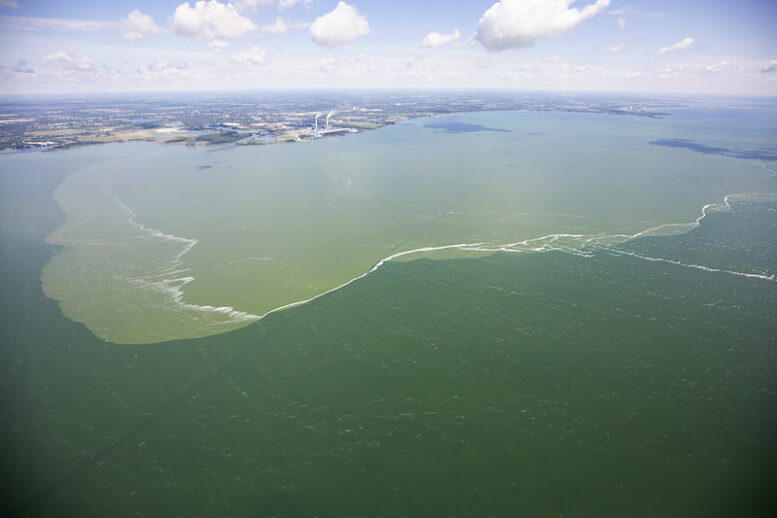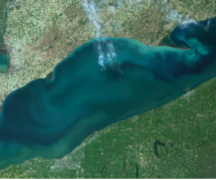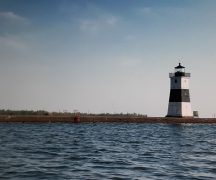By DAVID DUPONT
BG Independent News
The bottomline number for this year’s harmful algae bloom for Lake Erie is 5. That translates to an “above-moderate harmful algal bloom” in western Lake Erie this summer.
The numbers are not precise, though, so the severity range is 4.5-6, on the open-ended scale. The worst year on record was 2015 with a severity index of 10.5.
The current forecast would mean the bloom would be smaller than it was in the past three summers.
Rick Stumpf, NOAA’s National Centers for Coastal Ocean Science, who delivered the forecast, added a further caveat. The loading of nutrients depends on the flow of water into the lake, particularly from the Maumee. While July is expected to be hot and dry, he said, there is a risk of a “low probability high risk event” that could dump heavy rains the region in late July. That would increase the severity of the bloom to a level 7.
Stumpf noted that heavy rain like what fell Wednesday are not a problem, especially if crops are well established. That excess water evaporates.
Stumpf also noted that while they deliver one number for the western basin of Lake Erie that does not speak to where the bloom might be. That depends on the wind — how strong, and from what direction. Scientists can’t predict that.
But be assured, Stumpf said, the lake from Toledo to Buffalo will not be all covered with harmful algae.
When going out to enjoy the lake people need to check the algae situation where they are going, just like they would check the weather.
People and pets, he warned, should stay out of any scum, which is toxic enough to kill a dog.
For current HAB conditions at Lake Erie Beaches visit: Ohio DOH BeachGuard.
Scientists cannot predict how toxic the harmful bloom will be.
In 2018 cyanobacteria growth located near the intake pipes for the Toledo Water plant created microcystin. That polluted the water going through the plant and closed down most of the region’s water system.
Laura Johnson, director of the National Center for Water Quality Research at Heidelberg University, said that technological improvements have been made since that time, and that water treatment workers are confident they can treat the toxins.
Stumpf said the pattern of algae bloom growth has changed in the two decades they have been monitored. Earlier the growth would start late July and then peak. Now, he said, the growth starts earlier, with the beginning already evident this year, and then peak, and stay at that for a longer period of time.
Johnson said that the data on phosphorus, which, along with nitrogen, feeds the bloom, shows an average amount of water flowed into Lake Erie. More than half that flow came in April, with next two months drier than usual.
That resulted in a higher concentration of phosphorus flowing into Lake Erie because the heavy April rains fell on bare fields and that releases more of the nutrient.
Johnson offered words of hope. “There’s a lot of momentum to clean up that storm flow water. We have to have patience. … We have to let these things continue to happen.”





